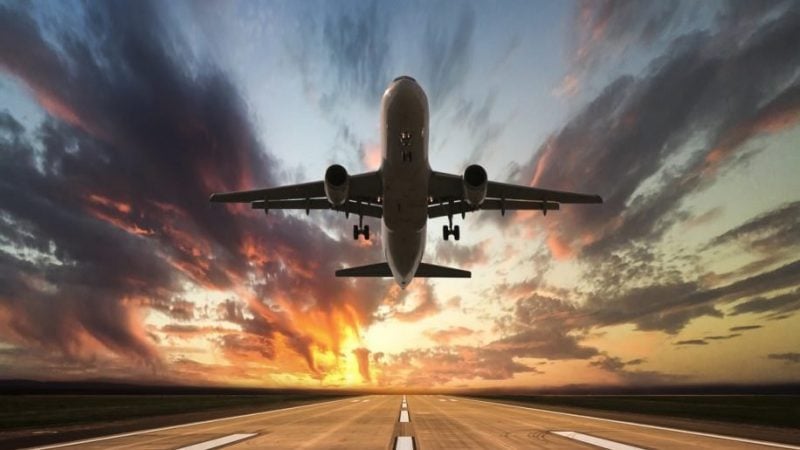ICAO Releases Updated Guidelines for Aviation’s Recovery
Preflight rapid testing and travel corridors are among the new CART recommendations
November 11, 2020


The International Civil Aviation Organization has released new updates to its COVID-19 Aviation Recovery Task Force (CART) “Take-off Guidelines” for international air transport. The revised guidelines offer recommendations to help countries re-establish public confidence in air travel and safely restart aviation services as quickly as is feasible.
“The speed of the evolving global situation requires timely and targeted guidance to effectively support States in their efforts to contain the pandemic while pursuing the restart and recovery of aviation,” ICAO council president Salvatore Sciacchitano said. “This makes clear the critical importance of global and regional coordination on setting out mutually accepted measures.”
The initial CART recommendations were published in June and were widely supported in the industry. ICAO said at the time the guidelines were intended to “inform, align and progress the national, regional, and industry-specific COVID-19 recovery roadmaps.” However in the early stages of the crisis, relatively little was known about the severity of the pandemic, its duration or what mitigation efforts might be most effective.
The intervening months have resulted in major strides in the scientific understanding of the coronavirus. The new Take-off Guidelines focus “primarily on the evolving technological and medical advancements in the fight against COVID-19,” according to chair of the Recovery Task Force, Estanislao Esono Anguesomo of Equatorial Guinea.
Guidelines on Testing
In particular the developments around preflight rapid testing and cross border risk management measures have drawn considerable support in the industry in recent months. Several airlines have already launched rapid testing trials to determine their efficacy in curbing the incidence of transmission and reducing or eliminating the need for countries to impose blanket quarantine measures.
When the CART Take-off Guidelines were first developed, it did not recommend the use of rapid COVID-19 tests available at the time because of their relatively low level of reliability and a lack of understanding of the ways in which the use of such tests might curtail the spread of the virus.
Since then, testing technology has undergone rapid improvement. In addition, health authorities have gained a greater understanding of the way the virus works and testing might reduce the likelihood of COVID-19 transmission. At the same time, rapid testing effectively administered could reduce reliance on such measures as quarantines.
The new CART guidelines recommend that countries which are considering testing should apply the approach outlined in the ICAO Manual on Testing and Cross Border Risk Management Measures. That document is currently under final review by WHO, with expected publication date of Nov. 16.
Public Health Corridors
The updated Take-off Guideline document and the ICAO Manual on Testing and Cross Border Risk Management Measures encourage countries to collaborate with each other regarding the development of so-called “public health corridors,” also called “travel bubbles.”
A corridor can be formed by two or more countries who evaluate the public health mitigation measures each has implemented and find them mutually compatible to ensure the health and safety of each country. The key, according to the guidelines, is for countries to actively share information and enter into bilateral or multilateral discussions with each other to implement PHCs in a harmonized manner.
ICAO says it is developing tools countries can use to help them evaluate and launch more PCH cross-border air services.
Masks and Public Hygiene Guidelines
The guidance on face coverings and medical masks has been updated to allow passengers to travel that cannot tolerate a face covering or medical mask, such as young children or individuals with physical disabilities, respiratory or other medical conditions. It also includes a new section on general hygiene to be followed at airports and on-board aircraft.
As in the original CART Guidelines, the new recommendations continue to acknowledge the sovereignty and authority of each country over its national pandemic recovery priorities, including with respect to the evaluation and use of passenger testing.
“Countries are urged to follow this updated guidance to align their measures, while upholding each State’s prerogative to implement additional and/or alternative mitigation measures in accordance with their specific needs and circumstances,” underscored
The report notes the continuous feedback ICAO is receiving from national authorities, international organizations including the World Health and Tourism Organizations (WHO/UNWTO), as well as regional organizations and industry.
The three global airline alliances, oneworld, SkyTeam and Star Alliance, have announced their support of the second-phase CART report. Together, they urge governments to implement the report guidelines for passenger testing protocols, as well as the adoption of digital health pass technology, so air travel may safely resume.
“With extensive travel restrictions creating much uncertainty for customers, testing can play a role in enabling the safe restart of travel,” noted oneworld CEO Rob Gurney. “Any solution used in declaring passenger health data should be consistent, scalable and cost effective – this will provide clarity and confidence to customers, airlines and other stakeholders as international travel resumes.”
In a statement announcing the updated CART Guidelines, ICAO secretary general Dr. Fang Liu said, “We’ve been encouraged by recent progress on the establishment of new international travel and health corridors between specific destinations. These are realizing some important and prudent first steps toward increased traveler confidence and sectoral recovery.”




